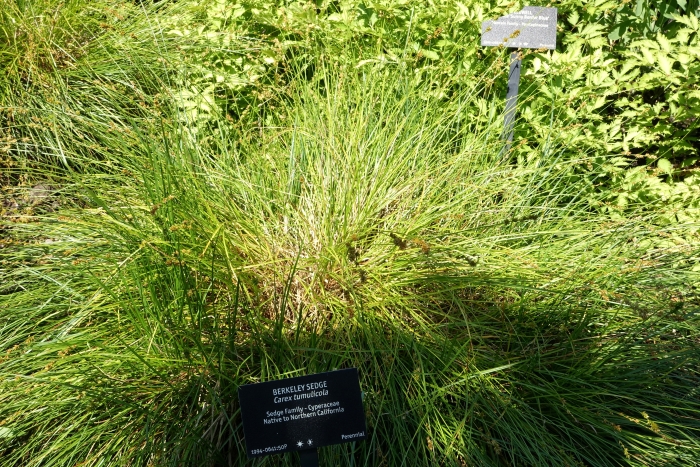Splitawn Sedge
(Carex tumulicola)
Splitawn Sedge (Carex tumulicola)
/
/

Daderot
CC0
Image By:
Daderot
Recorded By:
Copyright:
CC0
Copyright Notice:
Photo by: Daderot | License Type: CC0 | License URL: http://creativecommons.org/publicdomain/zero/1.0/deed.en | Uploader: Daderot | Publisher: Wikimedia Commons | Title: Carex_tumulicola_-_VanDusen_Botanical_Garden_-_Vancouver,_BC_-_DSC06771.jpg | Notes: User created page with UploadWizard |









Estimated Native Range
Summary
Carex tumulicola, commonly known as Splitawn Sedge, is an evergreen perennial herb native to the West Coast of North America, specifically from British Columbia to California. It is typically found in meadows and open woodlands, often in riparian zones and moist habitats below 1,200 meters (3,900 ft). This sedge reaches a height and width of approximately 2 feet (61 cm) and forms dense, grass-like clumps with narrow, arching leaves. The inconspicuous greenish-brown flowers appear in late spring to early summer and are not particularly showy. However, its foliage provides year-round interest in the garden.
Splitawn Sedge is valued for its naturalistic appearance and ability to create a meadow-like effect in gardens. It is often used in sustainable landscaping as a drought-tolerant alternative to traditional lawns, in native plant gardens, and for habitat restoration projects. It thrives in part shade to full shade and prefers moist soils with good drainage, although it can tolerate drier conditions once established. While it is slowly spreading, it is not aggressive and can be easily managed in a garden setting.CC BY-SA 4.0
Splitawn Sedge is valued for its naturalistic appearance and ability to create a meadow-like effect in gardens. It is often used in sustainable landscaping as a drought-tolerant alternative to traditional lawns, in native plant gardens, and for habitat restoration projects. It thrives in part shade to full shade and prefers moist soils with good drainage, although it can tolerate drier conditions once established. While it is slowly spreading, it is not aggressive and can be easily managed in a garden setting.CC BY-SA 4.0
Plant Description
- Plant Type: Grass
- Height: 1-2 feet
- Width: 2-3 feet
- Growth Rate: Moderate
- Flower Color: N/A
- Flowering Season: Spring
- Leaf Retention: Evergreen
Growth Requirements
- Sun: Part Shade, Full Shade
- Water: Medium, High
- Drainage: Medium
Common Uses
Bird Garden, Border Plant, Deer Resistant, Drought Tolerant, Erosion Control, Groundcover, Low Maintenance, Potted Plant
Natural Habitat
Meadows and open woodlands, often in riparian zones and moist habitats below 1,200 meters (3,900 ft)
Other Names
Common Names: Foothill Sedge
Scientific Names: , Carex tumulicola,
GBIF Accepted Name: Carex tumulicola Mack.